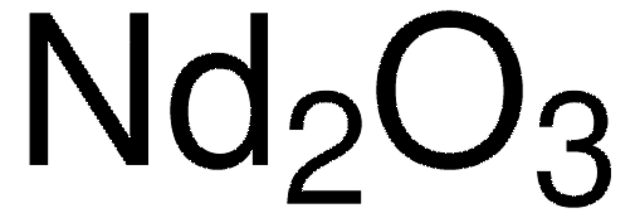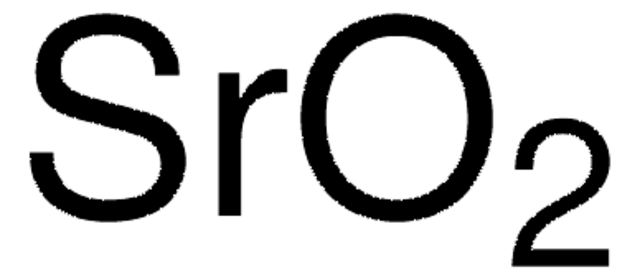Kluczowe dokumenty
472018
Strontium carbonate
≥99.9% trace metals basis
Synonim(y):
Strontium carbonate (SrCO), Strontium monocarbonate 3, Strontium(II) carbonate
About This Item
Polecane produkty
klasa czystości
for analytical purposes
Poziom jakości
Próba
≥99.9% trace metals basis
Formularz
powder
zanieczyszczenia
≤1000.0 ppm Trace Metal Analysis
gęstość
3.7 g/mL at 25 °C (lit.)
ciąg SMILES
[Sr++].[O-]C([O-])=O
InChI
1S/CH2O3.Sr/c2-1(3)4;/h(H2,2,3,4);/q;+2/p-2
Klucz InChI
LEDMRZGFZIAGGB-UHFFFAOYSA-L
Szukasz podobnych produktów? Odwiedź Przewodnik dotyczący porównywania produktów
Powiązane kategorie
Opis ogólny
Zastosowanie
- Fabricate ceramic composites for n-type thermoelectrics such as SrTiO3–TiO2.
- Prepare SrCO3/SrO systems for thermochemical energy storage application.
Kod klasy składowania
13 - Non Combustible Solids
Klasa zagrożenia wodnego (WGK)
nwg
Temperatura zapłonu (°F)
Not applicable
Temperatura zapłonu (°C)
Not applicable
Środki ochrony indywidualnej
Eyeshields, Gloves, type N95 (US)
Wybierz jedną z najnowszych wersji:
Masz już ten produkt?
Dokumenty związane z niedawno zakupionymi produktami zostały zamieszczone w Bibliotece dokumentów.
Klienci oglądali również te produkty
Produkty
Thermoelectric Performance of Perovskite-type Oxide Materials
The prevailing strategies for heat and electric-power production that rely on fossil and fission fuels are having a negative impact on the environment and on our living conditions.
Nasz zespół naukowców ma doświadczenie we wszystkich obszarach badań, w tym w naukach przyrodniczych, materiałoznawstwie, syntezie chemicznej, chromatografii, analityce i wielu innych dziedzinach.
Skontaktuj się z zespołem ds. pomocy technicznej












